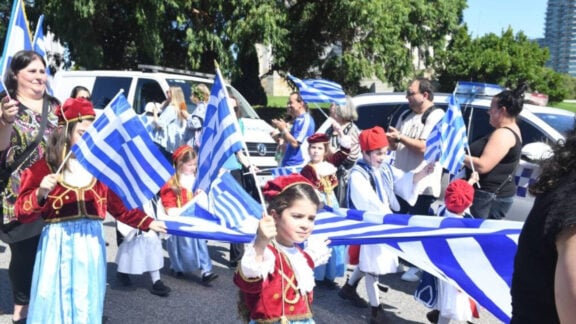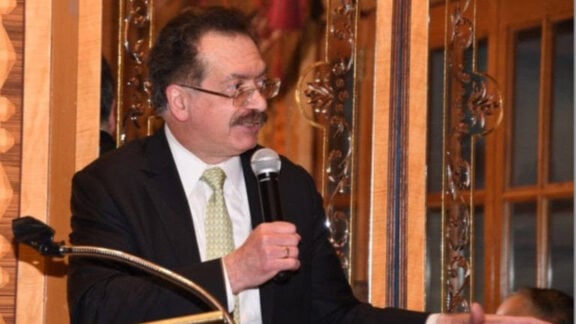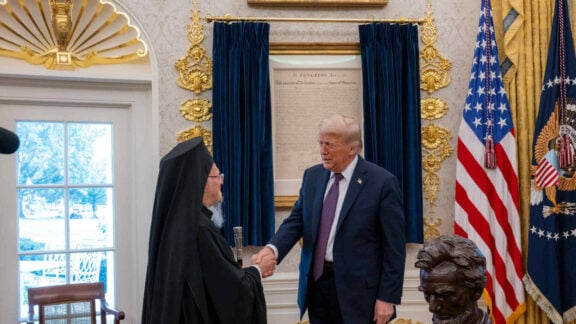In 1996, John Howard, from the centre-right Liberal Party, became Prime Minister of Australia. For the first time the Liberal Party had a leader that proclaimed to be campaigning on behalf of the “little Aussie battler”. For the first time the Liberal Party was being led by someone who saw himself as a victim. He had suffered at the hands of both the progressive left and the traditional elites. He resented the advances of the new social movements and had been scorned by the aloof and austere establishment of his own party. He was a Prime Minister who seethed with resentment and the one who pushed his party away from its liberal principles and towards a neo-nationalist cultural populism.
Major dents into the cultural landscape
At the core of his vision was a rewriting of Australia’s history of colonial settlement as a progressive achievement. He famously launched the ‘history wars’ and smeared what he called the ‘black arm band’ versions. During his eleven years as Prime Minister he made three major dents into the cultural landscape – he reversed the embedding of multiculturalism, blocked the recognition of Indigenous land rights, and switched the reception of refugees from a civil humanitarian issue to a militarised security matter. These three goals were consistent with his anxiety that the “little Aussie battler” was at risk. Howard saw himself as the defender from invaders – he was convinced that the ordinary Australian was open-hearted but was also vulnerable to being taken advantage of and therefore susceptible to having their secure way of life stolen from them.
The attack on multiculturalism, Indigenous rights and refugee policies were all part of a neo-nationalist and cultural populist agenda.
Multiculturalism, which had been pioneered in Canada and Australia in the early 1970s, was under attack because Howard believed that ethnic elites had hijacked an ideology to further their interests, confine their communities to ghettoes and undermine national cohesion. Howard also launched a campaign to discredit any legal advances towards the recognition of Indigenous land rights and presented the public with a map of Australia almost entirely coloured in brown to suggest that everyone would lose their backyard. The ‘war on refugees’ that is now spread across Europe and North America was first launched by Howard with the arrival of the ‘Tampa’ in the month before 9/11. During this unprecedented intervention, the armed services were dispatched to prevent the landing of refugees, Australian territories that were used to detain refugees were excised from the Australian legal frameworks, and media campaigns were released to portray the people who were fleeing from prosecution, as either economic agents seeking better life outcomes, or as monstrous invaders who had no regard for life or law.
When Howard was confronted with legal arguments about the rights of refugees, historical claims about Indigenous history, or affirmative perspectives on the value of cultural diversity, he became indignant. He counter-attacked by stigmatizing new ideas and maligning advocates such as high court judges, church leaders, heads of the peak medical bodies as if they were all elites that had lost touch with common people. His anger was palpable, and it was consistently rewarded as an electoral strategy.
However, beyond his political gains a deeper shift also occurred in the cultural landscape. Debates on multiculturalism, Indigenous land rights and refugee policies were exempted from rational discussion. The soundness of cultural policy was subjected to a fabled ‘pub test’. Expert findings were relegated to mere opinions.
Howard’s ‘history wars’ was a serious attempt at countering a new cultural hegemony. It found its zenith with the elevation of the disastrous loss of lives in the Imperial battle at Gallipoli as the fulcrum for national identity. In cultural policies there was a fundamental realignment with multicultural services being cut to a bare minimum, whereas the Australian War Memorial and Museum was bloated with additional funding. The hostility towards others, both external and internal, was exemplified in the ruthless manner that refugees were imprisoned in a legal ‘no-man’s-land’, and Indigenous People were deemed as not even worthy of a simple sorry.

Howard a cultural warrior
Howard saw himself as a warrior whose mission was defend to Australia from invasion and division. Central to this defensive mindset was the assertion that Australian values were already good and complete. They did not need to be subject to change and criticism. At the heart of Howard’s populism was a narcissism that was allergic to questions, investigation, and experimentation. Howard wanted Australians to feel that they were all self-sufficient. They did not need to think about change or listen to other views. They did not need experts to tell them the difference between right and wrong.
This populist reorientation on the relationship between government and culture has had enduring consequences. It normalized an invasion complex in the right-wing agenda but also validated the existing attitudes and popular prejudices, not just as the bedrock upon which all cultural discussion must begin, but as the boundary within which all decisions are made. Anything that questioned or threatened the validity of this cultural bedrock was met with derision and stoked more resentment. In a zero-sum game any advance gained by refugees, Indigenous activists, or advocates for multiculturalism, could only be gained at the expense of the citizen. The entitlement of ‘others’ was pitched against the security of the self. This defensive populism not only blocked any re-evaluation of the distribution of state services, it also blocked any experimentation with more dynamic innovations.
Has the cultural populism rejuvenated social cohesion, or does it create deeper furrows in which old and new divisions lurk? Two decades later Australians were offered a referendum to approve or reject a constitutional change that would grant an elected group of Indigenous people to have a ‘voice’ to the parliament. Over 60% of the people rejected this modest proposal. Howard came out of retirement to campaign against the change. In a public gathering he urged the people to “maintain their rage”. As my friend Martin Flannagan said, “what does this man have to feel angry about?” I suspect he feared that, once again, someone was about to steal his bbq.
How did the yes vote lose?
Any visitor to Melbourne would have been confused. On the main square, the walls of the cathedrals and town hall, the pillars of the library and the university, the logos of Qantas airplanes and all the national banks, there was unequivocal support for the Yes vote. On the fences and windows of private houses there were only posters supporting a Yes vote.
On the surface of the public sphere, it was a resounding Yes. However, this is no longer the front line for political activism. Democratic debate has been captured and rechannelled by the algorithms of new media. Over 80% of all the traffic in social media on the referendum was directed to the No campaign. In this terrain critique is contracted as attention is concentrated on familiar stereotypes. The political culture that was prominent in these new digital sphericles was focused on the rapid circulation of digestible targets of scorn. The equally simplistic signals of moral virtue and cultural openness failed to gain traction. There was a radical cleavage between what was openly proclaimed in the public sphere and what can be divulged in the privacy of the new media sphere.
Who voted no?
My yoga teacher who resented having a vaccine injected into the temple of her body voted no. Immigrants who pulled themselves up by their own bootstraps and resent that others get handouts voted no. All very decent people. Then there are the toxic racists, and the members of the right who resented any advance in progressive politics, they definitely voted no. Overwhelming the inner-city electorates with wealthy, tertiary educated constituents voted yes, while the suburban and rural electorates voted no.
This is a false division. It does not mark two opposing views that are in an open contest. The brilliance of the No campaign is that it drew on decades of validating smug ignorance that was summed up by its slogan: ‘If you don’t know vote no’. In other words, if you don’t understand the question, then there is no need to investigate, and reflect before you deliberate, simply assert yourself. Consequently, the No campaign did not win because it persuaded the majority of the merits of their argument, it simply asked people to indulge their resistance to change, to seek vengeance for their sense of resentment, to remain comfortable in their narcissistic self-beliefs. The No voters did not share a common view, they simply found a vessel that could hold a range of contradictory and discordant perspectives. The only success of cultural populism is the deepening correlation between a distrust towards experts and the validation of intransigence.
Looking at the legacy of two decades of cultural populism the social cohesion is truly at risk. Howard set out to “correct the pendulum” – to wrest back control of cultural hegemony from the centre-left. However, rather than unifying the nation with his celebration of noble war stories, the minorities are more minoritized, the refugees are treated as zombies, and the Indigenous People are even more isolated. Two decades of potential alliance building and cultural renewal have been wasted.
The Yes campaign could have been a moment of cultural celebration, a stage for new songs, images, and words for the future. Instead of building a more cosmopolitan culture we have been funnelled into ever narrower cultures of fear and more jagged sphericles of resentment. Incidentally, everything in my mother’s social world was encouraging her to vote No. She too is a decent person. She only voted Yes because she listened to her granddaughter.
Prof. Nikos Papastergiadis is the Director of the Research Unit in Public Cultures, based at The University of Melbourne. He is a Professor in the School of Culture and Communication at The University of Melbourne.









